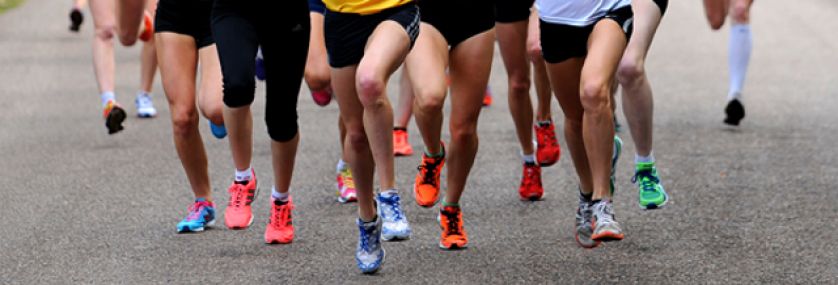
We are still involved with the knee joint. We have seen all the most important tendons and ligaments of the knee, the possible injuries, their treatments and how to prevent them...etc.
But the knee does not only and exclusively produce this type of problems. It is a more complex joint and in which other types of situations occur that we believe should be addressed.
For that reason, in this article we will know other important zones as the menisci.
What are the menisci?
The menisci are two fibrous and cartilaginous structures (internal and external or lateral) that are located between the femur and the tibia. For that reason, when we carry out physical activity we are continuously loading this area, absorbing the forces that we carry out on them. It has a crescent shape and its main function is to give stability to the whole joint by means of the cushioning of all the impacts that can be produced.
There are 2 menisci and its main difference is that they have different form; but at sport level especially it interests us to know that the internal meniscus is injured with greater frequency because it is subject to the articulation and this causes that it is much more ruled. Due to this lack of mobility the percentage of rupture is greater.
Types of injuries that take place in the meniscus

The type of injury that occurs is the meniscal tear. This rupture can happen for different reasons. Generally there are differences depending on whether the injured person is a young athlete or a person of a certain age.
In the first case, the meniscus is quite resistant because its wear has been smaller, for that reason, the rupture of the meniscus arrives provoked by a traumatism or by a sudden turn of the articulation when the foot this support in a stable surface. This can occur when any sports practice is performed (acute trauma).
On the other hand, as the sportsman increases of age, the meniscus loses vascularization and hydration and this causes that the injury takes place by degeneration of the own meniscus and is due, for example, to a possible arthritis of knee (trauma by repetition).
Types of meniscus tear
Above all we have to differentiate if it is in the peripheral zone or in the internal zone of the own meniscus, due to the fact that the peripheral zone is a more vascularized zone and for that reason, its prognosis is much more encouraging.
Fundamentally, a classification is offered on the different types of meniscal tears and it is based on the direction in which the tear occurs; therefore, the types of tears can be complex, longitudinal, radial, horizontal and oblique.
Symptoms of meniscus injury
The symptoms that usually occur are:
- Acute pain in the area (when performing any type of movement, walking ...).
- Major or minor inflammation depending on the trauma suffered.
- Difficulty to make the movement of flexion-extension.
- If it is chronic there is a blockage in the knee (difficulty to squat).
Finally, on the subject of the meniscus, we would like to highlight some types of malformations that usually occur:
- The discoid meniscus is a congenital problem and occurs when the meniscus is disc-shaped instead of crescentic, so it is larger. Generally it does not usually give any problem.
- The meniscus cyst, are infrequent and usually occur due to a meniscus tear.
How are meniscus injuries prevented?
In many of the occasions it is complicated to get to prevent them adequately. For the work to be effective we need to have illusion and certain knowledge, besides knowing with certainty the proposed objective at every moment of the season. There are different contributions to prevent all these possible injuries. We send you a series of proposals that both the athlete and the technical staff must take into account to carry out an adequate work.
1. Planned physical exercise.
2. Good nutrition.
3. Adequate technique (avoid as far as possible squatting and bent knees).
4. Wearing good sports shoes.
5. Proprioception work.
6. Be careful with certain positions and activities; for example, be very careful with weights, prevent abrupt knee movements.
7. Occasionally alternate work both cycling and swimming (in swimming pool), also a good complementary work is the beach (lower impact work).
How is a meniscus tear treated?
- Conservative treatment without surgery, by means of physiotherapy sessions and injury prevention activities.
- Surgical treatment with the realization of an arthroscopy. In the arthroscopy the suture of the meniscus is advised (repair) and not the meniscectomy (extirpation) since this last technique would facilitate the development of the arthritis and it is not advisable.
Conclusions
As you can see, all the pathologies described in this article are very interrelated. Therefore, we need the assessment of a professional to make a correct diagnosis and thus carry out an ideal treatment for the pathology in question.
From Rend & Prev we want to emphasize that not only these injuries occur in the sports section, but in many other cases such as the healthy, and that from the high performance center obviously has a place and this additional service is given.
Finally, we think that with the last articles we have already made a view throughout the entire joint of our knee, so that our readers know what to do at all times and thus improve in training and personal health.
Read more news about: Sports Injuries


























